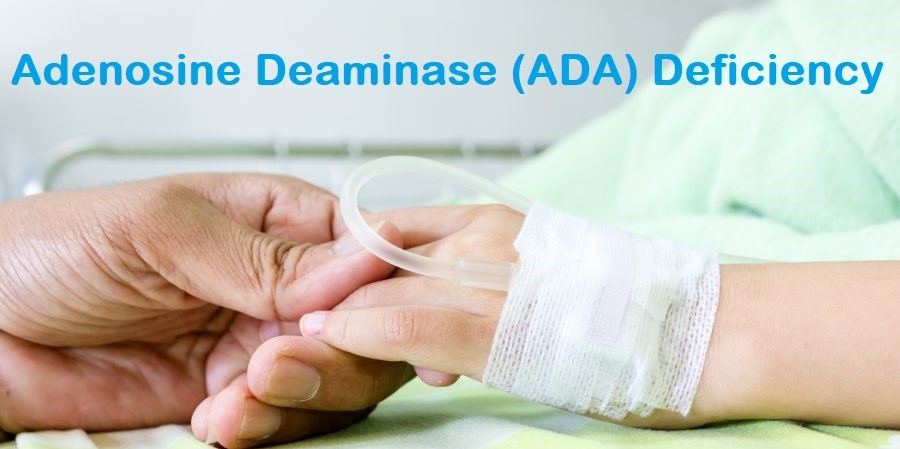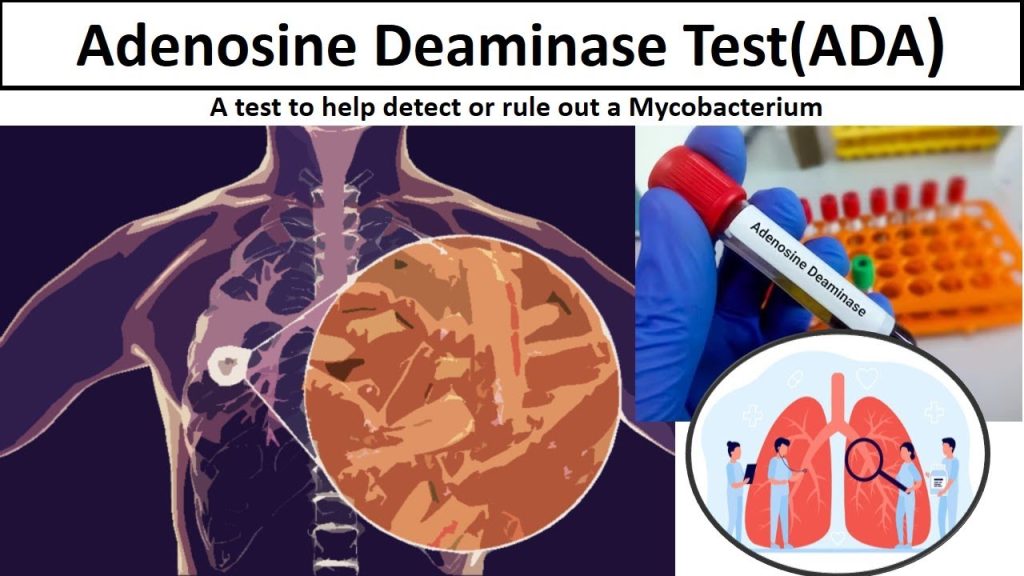What is Adenosine Deaminase (ADA) Deficiency?
Adenosine Deaminase (ADA) Deficiency is a rare genetic disorder that affects the immune system. It is a type of Severe Combined Immunodeficiency (SCID), also known as “Bubble Boy Disease.” The condition is caused by a mutation in the ADA gene, leading to a deficiency of the adenosine deaminase enzyme, which is crucial for immune function.
Without this enzyme, toxic substances build up in white blood cells (lymphocytes), leading to severe immune system failure. This makes individuals with ADA deficiency highly susceptible to life-threatening infections.

What Causes ADA Deficiency?
ADA deficiency is caused by mutations in the ADA gene, which is inherited in an autosomal recessive pattern. This means:
✔ Both parents must be carriers of the defective gene
✔ A child has a 25% chance of inheriting the disease if both parents are carriers
The condition primarily affects infants (severe form), but milder forms can appear later in childhood or adulthood.
Who is at Risk for ADA Deficiency?
✔ Newborns with a family history of SCID or ADA deficiency
✔ Children with unexplained, frequent, or severe infections
✔ Individuals with symptoms of immunodeficiency appearing later in life (late-onset ADA deficiency)
What Are the Symptoms of ADA Deficiency?
Symptoms vary depending on whether the deficiency is severe (infant-onset) or mild (late-onset).
Severe (Infant-Onset) ADA Deficiency
Symptoms appear within the first few months of life
✔ Severe and recurrent infections (pneumonia, meningitis, sepsis)
✔ Failure to thrive (poor growth and weight gain)
✔ Chronic diarrhea
✔ Severe respiratory issues
✔ Skin rashes and fungal infections
✔ Neurological problems (developmental delays, hearing loss)
Without treatment, most affected infants do not survive beyond their first two years due to life-threatening infections.
Late-Onset ADA Deficiency
Symptoms appear later in childhood or even adulthood
✔ Frequent respiratory infections
✔ Chronic lung disease or asthma-like symptoms
✔ Fatigue and muscle weakness
✔ Autoimmune disorders (arthritis, anemia)
✔ Hearing loss

How is ADA Deficiency Diagnosed?
Early diagnosis is critical to prevent severe complications.
✔ Newborn Screening (Blood Test) – Detects ADA enzyme activity in newborns
✔ Lymphocyte Count (Blood Test) – Measures the number of immune cells
✔ Genetic Testing – Confirms ADA gene mutations
✔ Enzyme Activity Test – Determines ADA enzyme levels in the blood
✔ Flow Cytometry – Assesses immune function
What Are the Treatment Options for ADA Deficiency?
Treatment depends on the severity of the condition.
1. Enzyme Replacement Therapy (ERT)
✔ Pegylated ADA (PEG-ADA) – A synthetic form of the ADA enzyme injected weekly
✔ Improves immune function temporarily but is not a permanent cure
✔ Used for patients who are not immediate candidates for a bone marrow transplant
2. Bone Marrow or Stem Cell Transplant (Curative Treatment)
✔ Best long-term cure for ADA deficiency
✔ Requires a matched donor (usually a sibling or unrelated donor)
✔ Transplanted cells produce normal ADA enzyme and restore immune function
3. Gene Therapy (New Experimental Treatment)
✔ Uses a virus to deliver a normal ADA gene into the patient’s cells
✔ Allows the body to produce its own ADA enzyme
✔ An alternative for patients without a bone marrow donor
✔ FDA-approved for some patients, but still under research
4. Supportive Care
✔ Antibiotics, antifungals, and antivirals – To prevent infections
✔ Immunoglobulin (IVIG) Therapy – Provides antibodies to boost immunity
✔ Avoiding live vaccines (patients with ADA deficiency cannot handle live virus vaccines)
What is the Prognosis for ADA Deficiency?
✔ Without treatment, infant-onset ADA deficiency is fatal
✔ With early intervention (bone marrow transplant or gene therapy), patients can lead normal lives
✔ Enzyme replacement therapy helps manage symptoms but is not a permanent cure
Can ADA Deficiency Be Prevented?
✔ Genetic counseling for families with a history of ADA deficiency
✔ Prenatal testing (amniocentesis or chorionic villus sampling) for at-risk pregnancies
✔ Carrier screening for parents planning to have children


